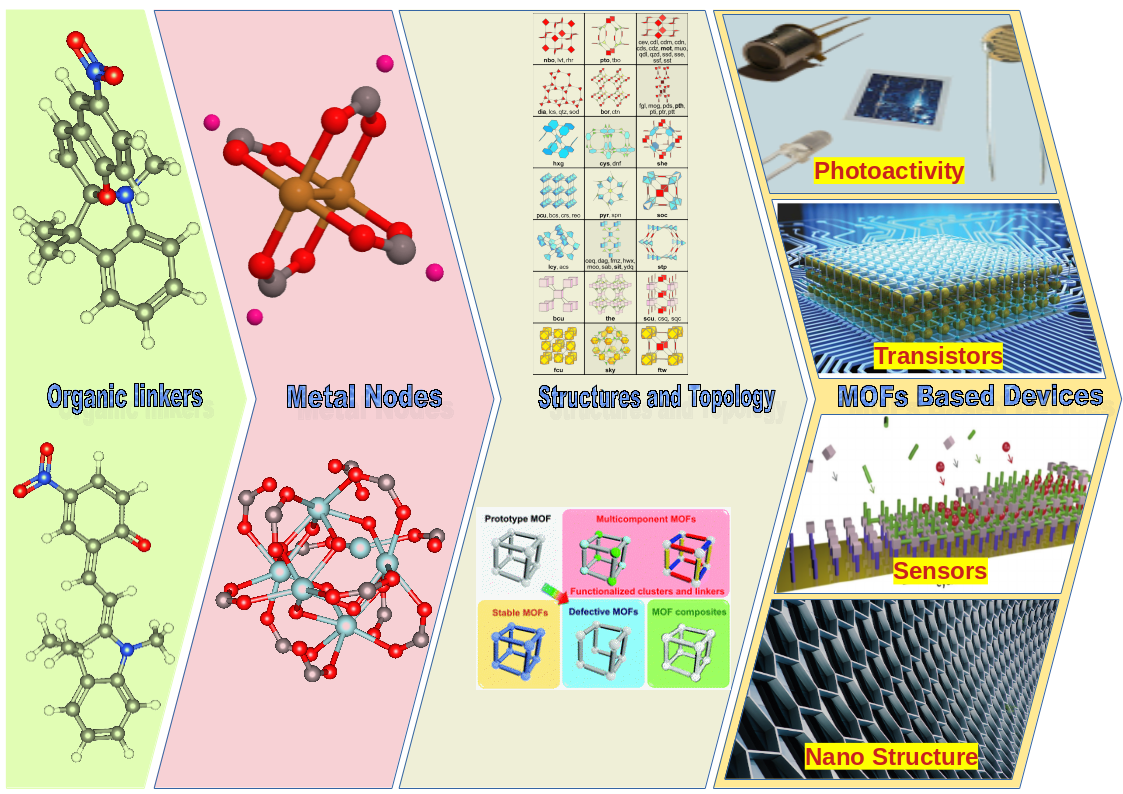Virtmat Organic Foundry
The assembly of molecules in a material and the successful embedding of suitable molecules in complex structures or frameworks, has a huge impact on the success of a designed material and its characteristics. Functional molecules inserted to materials have to be modified in most of the cases to allow a covalent or coordinative bond formation. Metal organic frameworks, MOFs, are a very good model for the establishment of an organic foundry process, allowing the transfer of the gained results to other fields of materials design. For the fabrication of chromophoric materials from photoactive organic molecules, a new, emerging approach is to assemble them into MOFs. The packing of the chromophoric units in the MOFs can be controlled by rational routines, allowing tuning photophysical properties of the resulting bulk materials and thus the performance of a device. E.g. exciton transport in chromophoric MOFs can be modified by introducing so-called steric control units to the chromophoric linkers. Such predictive crystal engineering to tune excitonic coupling has already been demonstrated. Here, more work is required to extend the applicability of the method to other properties like charge carrier mobilities required for field-effect transistors (FET), photoactive compounds, and advanced optical sensors using MOF-based optical cavities exploiting strong light-matter coupling. With regard to device applications, at IFG layer-by-layer fabrication methods have been developed, allowing its integration with common device architectures to yield solar cells, photosensors, and light-emitting devices.
| Name | Institute |
|---|---|
| Wolfgang Wenzel | Institute of Nanotechnology (INT) |
| Stefan Bräse | Institute of Organic Chemistry (IOC) |
| Marcus Elstner | Institute of Physical Chemistry (IPC) |
| Nicole Jung | Institute of Biological and Chemical Systems - Functional Molecular Systems (IBCS-FMS) |
| Christof Wöll | Institute of Functional Interfaces (IFG) |


